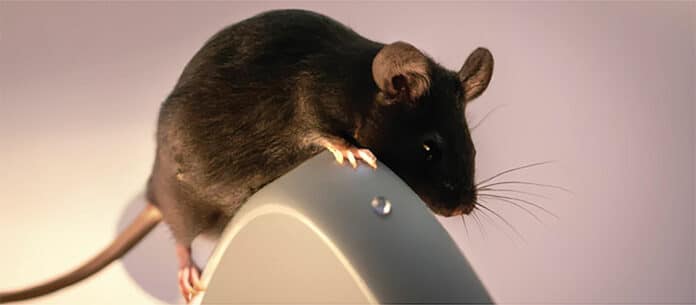Behavioral states can influence the performance of goal-directed sensorimotor tasks. Yet, it is unclear how altered neuronal sensory representations in these states relate to task performance and learning.
Researchers from the University of Geneva (UNIGE) and the EPFL have demonstrated how motivation changes the brain circuits in mice that control sensory perception before making decisions. This study explains how excessive or insufficient motivation might influence our perception and, consequently, our decisions.
In collaboration with Professor Carl Petersen’s team at EPFL, researchers studied the role played by a specific internal state – motivation – in perception and decision-making. For more than a century, it has been known that a relationship between cause and performance exists. Too much or too little motivation is detrimental to performance. However, how this impacts our neural circuits remains unclear.
Sami El-Boustani, the study’s lead author, said, “We wanted to observe how sensory information transmitted by neurons in the cortex is altered by the degree of motivation and to what extent the latter can affect learning and performance in a decision-making task.”
The study group created a behavioral paradigm using mice on a regulated water consumption schedule. They first trained the rodents to use two whiskers (A and B) to respond to tactile inputs and to perform an action (licking a spout) exclusively with whisker A to get a drop of water. These mice mainly responded to the stimulation of whisker A after this training, demonstrating their capacity to distinguish between these two sensations. To further modify the rodents’ drive to engage in the experiment, the researchers ran these tests at progressively lower thirst levels.
The performance of rodents was low when they were really thirsty and consequently highly motivated. They licked the spout without discriminating between the whiskers that were aroused. However, their course of action became ideal when they were only somewhat thirsty. When whisker A was activated, they licked the spout primarily. Finally, when they were not particularly thirsty, they again performed poorly on the assignment.
Giulio Matteucci, a Postdoctoral Fellow in Sami El-Boustani’s laboratory and the study’s first author, said, “By observing the activity of neuronal populations responsible for perceptual decision-making in these mice, the researchers discovered that neurons in these circuits were flooded with electrical signals when mice were hyper-motivated. Conversely, the signals were too weak in a state of low motivation. Hyper-motivation leads to the strong stimulation of cortical neurons, which causes a loss of precision in the perception of tactile stimuli.”
In contrast, in the low-motivation state, the accuracy of the sensory information was recovered, but the strength of the signal was too low for it to be transferred correctly. As a result, the perception of the stimuli was also impaired.
Carl Petersen, Full Professor at the Brain Mind Institute of EPFL and co-senior author in the study, said, “These results open up new perspectives. They also reveal that the motivation level impacts not only decision-making but also the perception of sensory information, which leads to the decision.”
“This work also suggests that it is necessary to decouple the acquisition and expression of new knowledge. We observed that mice understood the rule very quickly but could only express this learning much later, depending on an altered perception linked to their level of motivation. This unraveling of the role of motivation in learning opens the way to new adaptive methods that aim to maintain an optimal level of motivation during learning.”
Journal Reference:
- Giulio Matteucci, Maëlle Guyoton, et al. Cortical sensory processing across motivational states during goal-directed behavior. Neuron. DOI: 10.1016/j.neuron.2022.09.032
